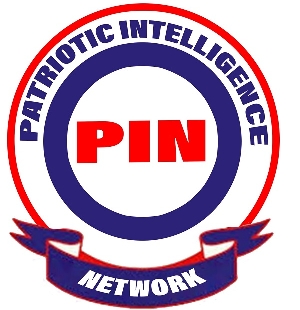- Home - News
- TWI News | TV
- Polls
- Year In Review
- News Archive
- Crime & Punishment
- Politics
- Regional
- Editorial
- Health
- Ghanaians Abroad
- Tabloid
- Africa
- Religion
- Election 2020
- Coronavirus
- News Videos | TV
- Photo Archives
- News Headlines
- Press Release
Opinions of Tuesday, 30 March 2021
Columnist: Azure Imoro Abdulai
Adopt a health communication strategy to fight Coronavirus
The outbreak of the novel Coronavirus in December 2019 took world leaders by surprise as many did not anticipate it would cause such havoc to the world. The pandemic has affected over 200 countries around the world with Ghana recorded its first case in March 2020.
Since then, it appears we are not out of the woes yet as a country because we have ushered in a new wave of the deadly virus without any sign of relief as we thought it was last year when the COVID-19 infections figures declined drastically.
It appears the new variant of the virus in 2021 has become more perilous and deadlier than we could imagine. As of February 5, 2021, more than one hundred million people have been infected with more than two million dead; this is according to the World Health Organization (WHO).
In Ghana, The escalating number of infections daily in the country compelled the President to re-impose some restrictions in his 23rd COVID-19 televised broadcast to fellow Ghanaians on Sunday the 31st of Jan.2021. This new variant of COVID-19 has become a public health concern which warrants all hands on the deck to salvage the situation before it becomes a tsunami and consumes all of us.
Desperate problems call for desperate solutions. Therefore, our leaders must explore all possible avenues to curb the spread of the pandemic. There are many sides to this deadly virus hence; many strategies need to be adopted to curb it.
There is a lifestyle side of it, there is a cultural dimension, there is a medical angle, and there is also psychological phenomenon as well as the environment. Considering all these angles to a single pandemic such as COVID-19, then obviously the only panacea is to deploy an efficient and effective health communication strategy to deal with the pandemic.
For this article, I would like to define the term health communication. “Health communication is a multidisciplinary and multifaceted approach to reach a different audience and share health-related information to influence, engaging, and support individuals, communities, health professionals, special groups, policymakers and the public to champion, introduce, adopt, or sustain a behavior, practice, or policy that will ultimately improve health outcomes.” (Schiavo 2007, p.7).
When you are confronted with a multifaceted problem, then you must adopt a multifaceted approach to deal with it. As the adage goes, “if you see a pregnant goat in the market, it means there is a pregnant problem in the house.
The ministry of health, Ghana Health Service, and the ministry of information must develop, adopt and roll out an elaborate and comprehensive COVID-19 communication plan that is sustainable which should serve as a guide and a roadmap in the fight against the pandemic.
Since Ghana recorded her first case of COVID-19 in April 2020, health communication experts and professional bodies within the communication industry like the advertising association of Ghana (AAG) have called for a communication plan and a communication strategy as far as the fight against COVID-19 is a concern.
Only recently the AAG expressed willingness and readiness to compliment the Government's effort in rolling out a COVID-19 communication strategy and have called on the government to involve the private sector in that direction.
I have not sighted any COVID-19 communication plan, strategy, or blueprint from the relevant agencies mandated to manage the spread of the virus. The deployment of mass media in the daily briefing from the information ministry's conference room in Accra is very deficient and problematic.
This is because the use of mass media to convey messages to the intended audience in a pandemic such as COVID-19 lends itself towards the magic bullet theory which has proven to be inefficient and ineffective. Apart from that, it is also generic, single, and sporadic with a top-down approach.
To develop and roll out a health communication strategy for any health intervention program, the first parameter is to identify and define the health environment you are operating in.
Typically the political environment which deals with policies, laws, political willingness, and the commitment level of priority in the political agenda should be critically analyzed and evaluated the audience forms an integral part of the health environment therefore they must be researched on regarding their health beliefs, attitudes, behavior, cultural, age, gender, literacy levels, their risk factors, lifestyle issues as well as their socioeconomic factors.
A situational report or analysis should be conducted to map out the social stratification which has to do with stakeholders’ beliefs, attitudes, and practices, social norms, social structure as well as existing initiatives, and intervention programs. All these factors are very critical when designing a health communication campaign because they are interconnected and intertwined.
Ghana just took delivery of the COVID-19 vaccines and has even begun to roll them out in a mass vaccination exercise. Ways before the vaccines arrived, a cross-section of Ghanaians have expressed varied views and opinions about the vaccine with deep skepticism whether they will take it not.
The fears and skepticism of these people are valid and legitimate. If they had been armed and fed with the needed information through a rigorous communication campaign, I will be sure that their fears will be allayed.
A well-known method of any health communication intervention campaign is community mobilization, advocacy, and participatory communication. I have not seen much of the drama, the music, the stories in our various cultures and languages about the importance and safety of vaccines.
Convincing people about a healthy lifestyle and adopting healthy behavior have never been easy at all. Mba Naporo Alhassan is a 55years old farmer in Northern Ghana who has consistently received conflicting information about the AstraZeneca COVID-19 vaccine and its potential adverse effect.
He has also heard a little about the benefits and efficacy of the vaccine and now he is confused as to which of the information to trust. So what must we do to allay the fears Mba Napora and millions like him are entertaining?
Here, It is imperative to develop an end to end communications tools such as brochures, posters, web pages, and deploy community information vans that will convey information that will reinforce the information Mba Naporo might have received or heard from his health care provider and to demystify the myth about the vaccine.
Prarthana Shukla holds a medical degree from Ahmedabad, India, and has moved to the United States to complete a master’s in public health at New York University. She first became familiar with the importance and impact of health communication while she was working on the polio eradication campaign in India.
“As a member of one of the medical teams that administered the oral polio vaccine to infants and unimmunized children in India, she attributes the long lines of people waiting to be immunized to a widespread and well- designed communication campaign that used multiple channels to convey the importance and safety of immunization. ( Schiavo, Renata. Health communication: from theory to practice).
Government and all other stakeholders at the forefront of the fight against this deadly pandemic have a very herculean and multiple tasks to perform because two key issues have to be dealt with right now. One has to do with how the vaccines can be administered successfully at the same time to educate the population about the safety protocols and the need to still abide by them.
Information about Covid-19 has not permeated well in our society yet we are deploying and rolling out a vaccination program also.
In all these, communication should be the key driver. The design and deployment of a health communication plan is a potent and sustainable tool that is capable of achieving a health intervention program.
All communication interventions campaigns must be a step- a by-step approach which must start and end with the ultimate beneficiary or a target audience in mind. It should be an end-to-end continuous process. Communication has proven to be the only tool that can be used to promote behavioral and social change.
There are enormous potentials in a well-crafted and well-implemented health communication strategy. And the surest and best approach towards the fight against COVID-19 is to design and adopt a health communication plan strategy.
Therefore, it is high time for the Government, and all other stakeholders as well as policy implementers both at the local and national level to hire the services of health communications experts and researchers in the struggle to defeat this strange virus that has engulfed our nation.











